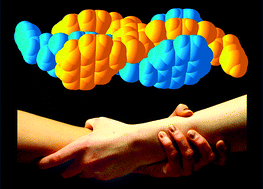Mutual binding of polymer end-groups by complementary π–π-stacking: a molecular “Roman Handshake”†
Abstract
Self-complementary tweezer-molecules based on a naphthalenediimide core self-assemble into supramolecular dimers through mutual π–π-stacking and hydrogen bonding. The resulting motif is extremely stable in solution (Ka = 105 M−1), and its attachment to one terminal position of a poly(ethylene glycol) chain leads to a doubling of the polymer's apparent molecular weight.


 Please wait while we load your content...
Please wait while we load your content...